Who Is Notable for Creating Protest Art Using Collage
Manufactures and features
5 Contemporary Collage Artists Calculation New Layers
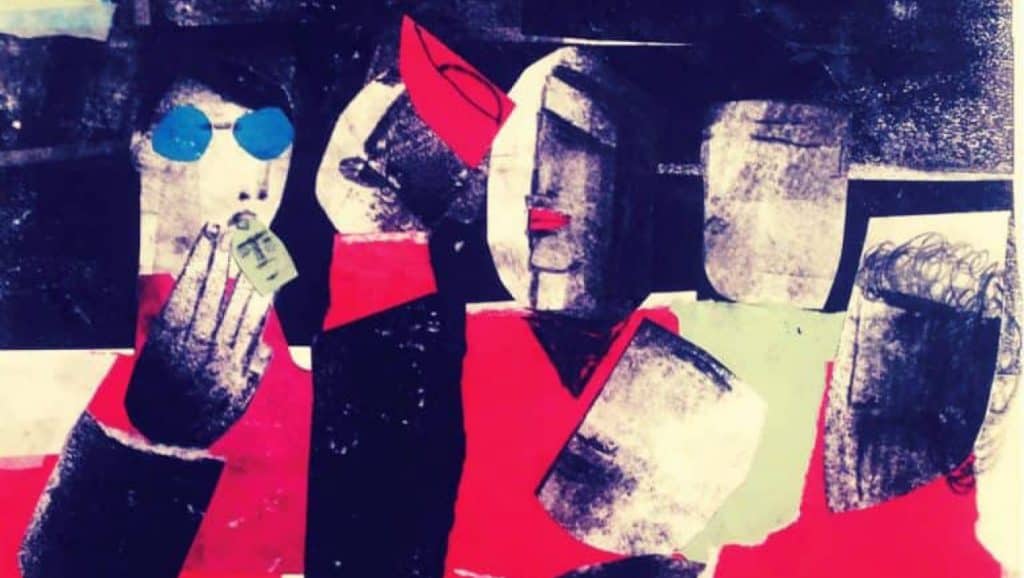
By Shira Wolfe
"Collage is the cut, the tear, the rupture and the overlay of our gimmicky culture. It is the hybrid language of urbanity—remixed, re-contextualized, and wholly built from the fragments of daily life."
Pavel Zoubok
The get-go examples of collage art were made over 100 years ago, when Georges Braque and Pablo Picasso, at the height of their artistic exchanges, outburst into completely new territory with their avant-gardepapiers collés. Cutting, ripping, pasting, overlaying dissimilar textures and materials, the ii artists started examining and dissecting objects and life in a radically new way. Since then, collage artists from endless different movements, from Surrealism to Abstract Expressionism and Pop Art, accept been exploring the technique. Contemporary collage artists keep to piece of work with the medium in means that offer u.s.a. new notions of what information technology tin can be and how information technology reflects on the world effectually us. In a conversation with collage specialist Pavel Zoubok, we reflected on the mutual misconceptions that take been following collage art around for a long time.
For i, collage is often considered as intimate, scaled piece of work. Nonetheless take an artist like Mark Bradford: he defies this notion with his impressive, large-scale works combining standard paints and collage. This brings u.s.a. to the second common misconception, that collage never encompasses painting. Collage artists like Bradford evidence us this is not the case, also as David Salle, whose painting in the '80s was absolutely guided by a "collage-blazon-thinking" inspired by moving-picture show montage. Finally, people frequently consider collage to be bottom than other art forms, viewing it every bit a 2nd cousin to painting and sculpting. Rather than considering collage as a pure fine art course in and of itself, people tend to run across it as a step on the style to something else. This strange understanding of collage is easily dismantled when taking a wait at the rich, creative and ground-breaking history of collage. American Popular Artist James Rosenquist, for example, started out past making collages which were studies for his large-scale paintings. Yet the collages started taking on a life of their own, and Rosenquist somewhen presented them as powerful standalone artworks.
"I am interested in preserving the memory of the start, 'raw version' of an event, before the process of memory takes over and reshapes, even deforms the actual event over the years."
Laslo Antal
Famous Collage Artists Reinventing the Medium
The post-obit collage artists, each in their ain mode, challenge and dismantle the narrow-minded notions nearly collage. They bear witness us how powerful, inspiring and relevant the art of collage however is today and continuously explore how they can redefine and reinvent the medium.
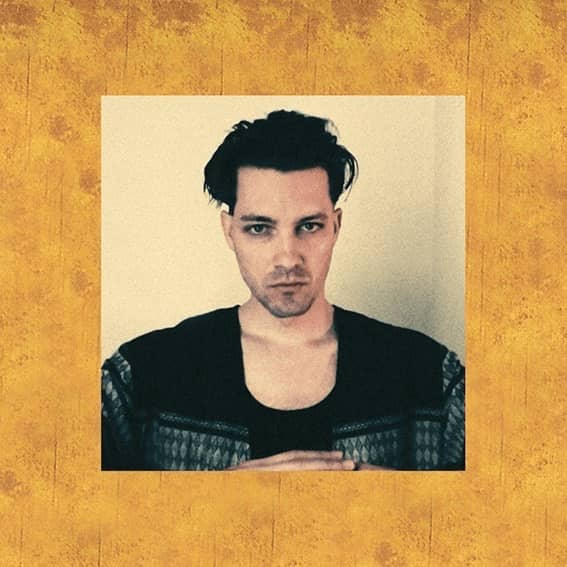
i. Laslo Antal – Visual Diaries
The first of our selection of collage artists, Laslo Antal is a Hungarian artist from Serbia who is based in Berlin. The focus of his artistic practice lies with the collage medium. In 2017, he started the daily art project "Visual Diaries." Every 24-hour interval, Antal makes i collage, narrating a single event in that day. This results in an incredibly diverse range of topics and themes, at times revealing the artist's well-nigh intimate and emotional moments, at other times presenting seemingly bland situations or baroque everyday experiences. Moments of shame, pain, frustration or utter simplicity are depicted just as oftentimes equally moments of beauty and success in the artist's everyday life.
In his collagePain Thing (2019), the artist depicts himself in agony – iii heads and iii oesophagi lead down into a stomach that is called-for vivid cerise. InLove – and then many times explaining the same same matter (2018), we run into a portrait of a screaming man, the tiptop of his head opening up to reveal blood-red fume escaping. Below the portrait, the artist has scrawled the words: "You used to drive me crazy, but now I don't feel anything." Loss and death are besides candy through the collages. InA ritual in the cemetery, to permit things go (2018), we encounter Antal in the middle of a deeply personal moment, scattering what might be flower petals, snowfall, or soil over the grave of a man. He becomes even more direct inMy 70 year old D(eastward)advertisement(2018), dedicated to his father who passed away. On other days, he might choose to reverberate on a simple night communicable upwards with friends, like inNevertheless a Saturday Nonetheless(2019). Each event finds its identify in Antal'south collages.
The project aims to heighten questions about what happens to intimacy in one case it enters the public sphere, nigh the unreliability and fickleness of retentiveness, and about the office of the artist every bit a witness to and recorder of the world around us. As Antal himself explains, "I am interested in preserving the memory of the commencement, 'raw version' of an event, earlier the process of memory takes over and reshapes, even deforms the actual event over the years. While some people need a lot of time to laissez passer in gild to process and empathise life events, I need this immediate course of processing or I feel I lose touch on with those experiences. The person I was a year agone, or two years agone, has in many ways changed so much to become the person I am today. If I don't tape my immediate experiences every solar day, I'm afraid I might never be able to admission those parts of myself once again."
Influences and Way
Visually, the artist cites Henry Moore'south monumental sculptures, Jenö Barcsay'south mosaic work, and Marc Chagall'south painting among his many inspirations. Indeed, Antal's distinctive easily are reminiscent of the large, rough, monolithic hands of Moore'south figures. Elsewhere, the bulky yet sensual figures from Barcsay'south mosaics seem to shine through in Antal'southward colourful, dynamic figures.
Rather than using newspapers, photographs, or other pre-made images and materials similar in more conventional collage-work, Antal almost strictly works with his own drawings and prints. Using a personal technique he adult over the years, he imprints sheets of paper with oil and acrylic paint. He and so cuts, rips, and pastes these, adding his own cartoon and painting and oft including written words or sentences.
Flux and Grounding
Antal's collages reveal a unique perspective on all the picayune scattered moments that brand upwards human life. A prolific visual storyteller, each moment becomes important – from lone nights in the city to exhilarating travels and deep connections. "As a Hungarian who grew up in Serbia in the '80s and '90s and moved to Berlin I have often felt out of place and hovering in-between worlds, so information technology is important for me to make these connections betwixt the places where I alive, have lived, and travel," says Antal. "Wherever I go, I bring with me my 28cm ten 35cm workbook and my materials, and so that I can end every day with the practice of making my daily collage. The daily collage then becomes a kind of grounding do for me, a ritual of dwelling house, wherever I am."
For more information most Laslo Antal, see:
Laslo Antal Website
Laslo Antal Instagram
Novembar Gallery
"I started doing collages because they were quick and I could work through ideas quickly. In an unexpected manner it adult into a vox that continues today."
Lance Letscher
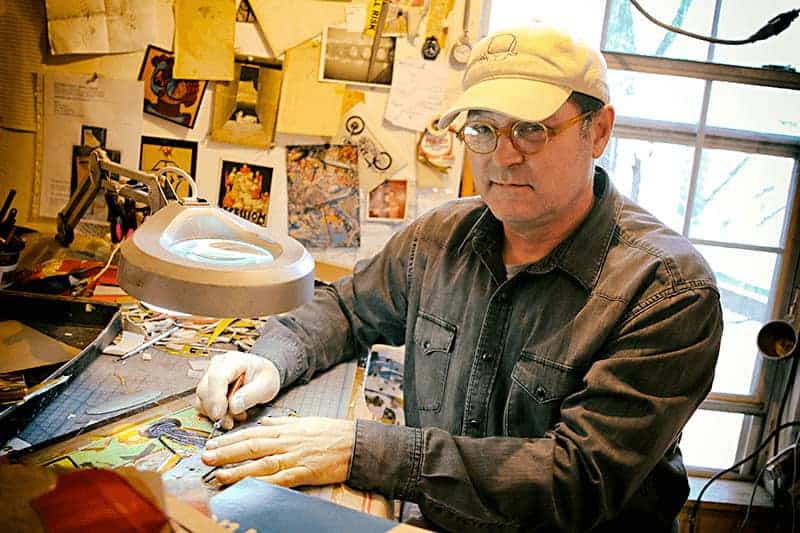
2. Lance Letscher – The Pull Towards Collage
We continue our overview of collage artists with Lance Letscher. Based in Austin, Texas, his work speaks to the idea of collage every bit a quasi-narrative way of working. Letscher started out with drawing and painting, before turning to collage and assemblage full-time in the early on 2000s. In an interview, he explains: "I started doing collages because they were quick and I could piece of work through ideas rapidly. It'due south always been an emphasis in my life to depict. I would use drawing to work myself out of issues. It just blossomed from there. In an unexpected style, it developed into a voice that continues today."
Letscher often finds materials in dumpsters, half-price books, and other discarded objects. He is usually most attracted past the things that people throw away, conveying marks, crud, and signs of wearable and tear. He tends to gather his textile in piles co-ordinate to color or other markers. Then, he starts cut pieces and assembling the different parts, gluing, pressing, and recutting the different parts to create their finished shape. Normally, Letscher assembles his different parts without gum first, trying out dissimilar compositions until he is satisfied. This can be a long and laborious process. When he'south happy with the composition, he transfers the parts onto a lath and glues them. Due to the scale of his work, the drying fourth dimension can be around three days. And fifty-fifty then, the creative person frequently decides to alter the works – he might finish up cropping or cutting parts of the collage after information technology has stale and can actually see what the finished work looks like.
Trauma and Retentivity
Memory plays a large part in Letscher's collages, as well as dealing with his personal psychological traumas. Afterward the suicide of his father in 2010, Letscher explains that his work changed dramatically and become a lot more than expressionistic, dealing more with psychiatric issues. At the same time, once Letscher begins an artwork, even though he may start out with a story that continues to develop, the materials he works with are the chief actors driving the work. For Letscher, collage provides a language with which to navigate the chaos of life and to notice structure, beauty, and peace. For as chaotic as his collages may seem, there is a serenity to exist constitute there – similar in the many hands encapsulated in blue geometric shapes reaching out to each other, hovering above a rowboat bouncing on the waves inRow Boat (2018).
The projection aims to heighten questions about what happens to intimacy once it enters the public sphere, about the unreliability and fickleness of memory, and about the part of the artist as a witness to and recorder of the earth effectually us. Every bit Antal himself explains, "I am interested in preserving the memory of the first, 'raw version' of an effect, before the procedure of retentivity takes over and reshapes, fifty-fifty deforms the actual event over the years. While some people need a lot of time to laissez passer in club to process and understand life events, I need this immediate form of processing or I feel I lose affect with those experiences. The person I was a year agone, or two years ago, has in many ways inverse so much to get the person I am today. If I don't record my immediate experiences every day, I'1000 afraid I might never exist able to admission those parts of myself once more."
The Secret Life of Lance Letscher
In recent years, Letscher started working with metal equally fabric for his collages. While working on a public art project in Austin, Texas, for which he created the large muralBig Middle(2015) out of scrap metallic, director Sandra Odair filmed his working process, resulting in the documentaryThe Surreptitious Life of Lance Letscher. From the same period is Letscher's metal collageHand (2016), a massive aggregation of cobalt bluish and copper metallic scraps from India. Letscher'southBlack Bird from 2017 is another arresting metal collage. The seemingly sweet imagery of a blackbird with flowers on its feathers is juxtaposed with the harsh reality of the metal material and the staples aggressively covering the piece of work.
"I'chiliad really into color and space and the illusion of space," explains Letscher. "I enjoy using formal elements to fob and to guide the eye through the slice."
For more about Lance Letscher, run into:
Lance Letscher Website
Lance Letscher Documentary

-
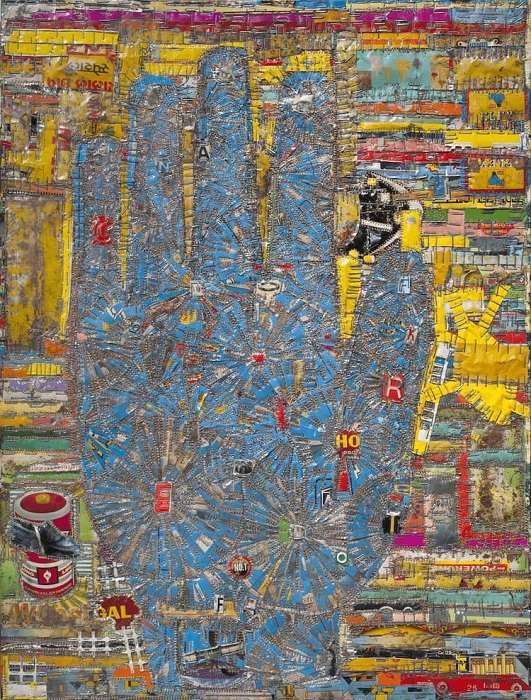
Lance Letscher, Hand, 2016. Courtesy Tayloe Piggott Gallery -

Lance Letscher, Footling Row Boat, 2018. Courtesy Pavel Zoubok Fine Art
"For me, a big role of this work is about technique. It'due south virtually figuring out how to manipulate your materials in such a way that it can get really thick and layered and contain the colours."
Raquel van Haver
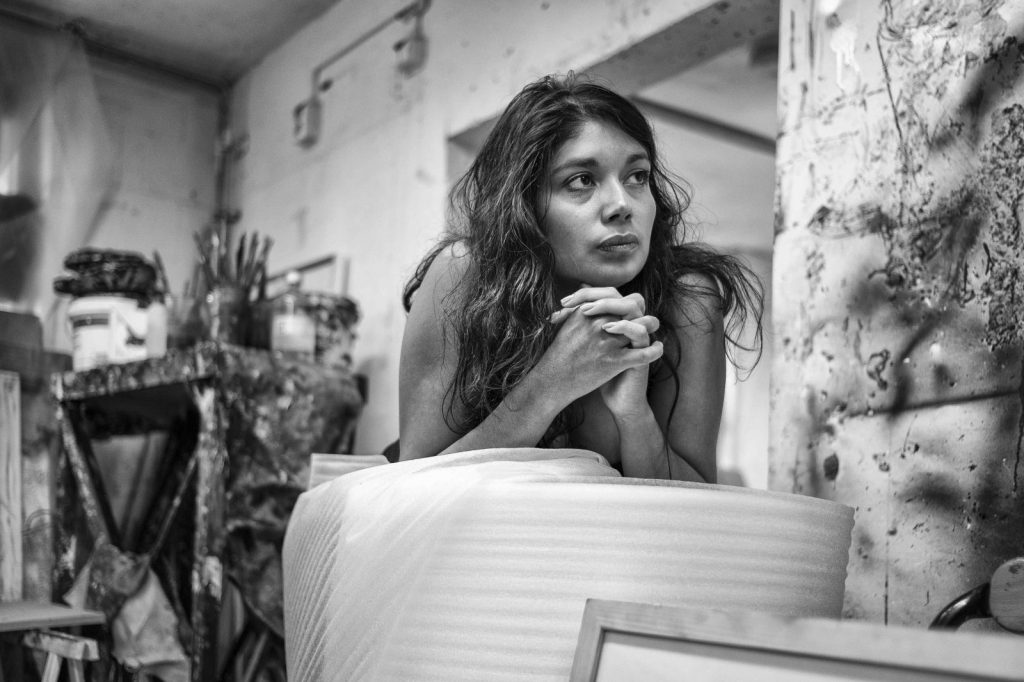
3. Raquel van Haver – The Collage Mindset
Spending fourth dimension with the large-scale, layered paintings by Colombian-born Dutch creative person Raquel van Haver, it rapidly becomes clear that there is something of a collage mindset at play hither. Van Haver started exploring her by at present signature style, employing thick layers of pigment and ofttimes calculation establish objects and different materials, dorsum when she was in the art academy in Utrecht. Over the years she started investigating more and more how far she could take it. "For me, a big office of this work is most technique. Information technology's about figuring out how to manipulate your materials in such a fashion that it tin can become actually thick and layered and contain the colours," explains Van Haver.
Van Haver starts with drawing on the canvas, then works with a thick-to-thin approach. Start she'll paint a thick layer, next a thin one, and so along. The objects she adds to her canvases ofttimes contain some symbolic meaning for the creative person. Anything from cigarette butts to faux hair, drumsticks, mobile phones, bead optics, and Nollywood posters have ended up in her paintings.
Themes
Van Haver'due south work explores people from all walks of life and all layers of society across the earth. She is particularly passionate about showing glimpses of people'southward lives who might usually exist disregarded in society, or pushed to the side – people who alive on the fringes, people who are stigmatised and marginalised. As such, she's spent time cultivating relationships with immature men hanging out on the streets of her neighbourhood in Amsterdam Southeast and in London, with gangs of teenagers in Lagos, Nigeria, and with people in the 'favelas' of South America. She gets to know people, in a sense starts living with them, and and so starts taking their photographs. These photographs, she later uses as studies for her paintings, where she weaves together unlike faces and places to create assemblage-type works of the people she's met on her travels and in her daily life.
For more on Raquel van Haver, run into:
Jack Bell Gallery
Stedelijk Museum Amsterdam
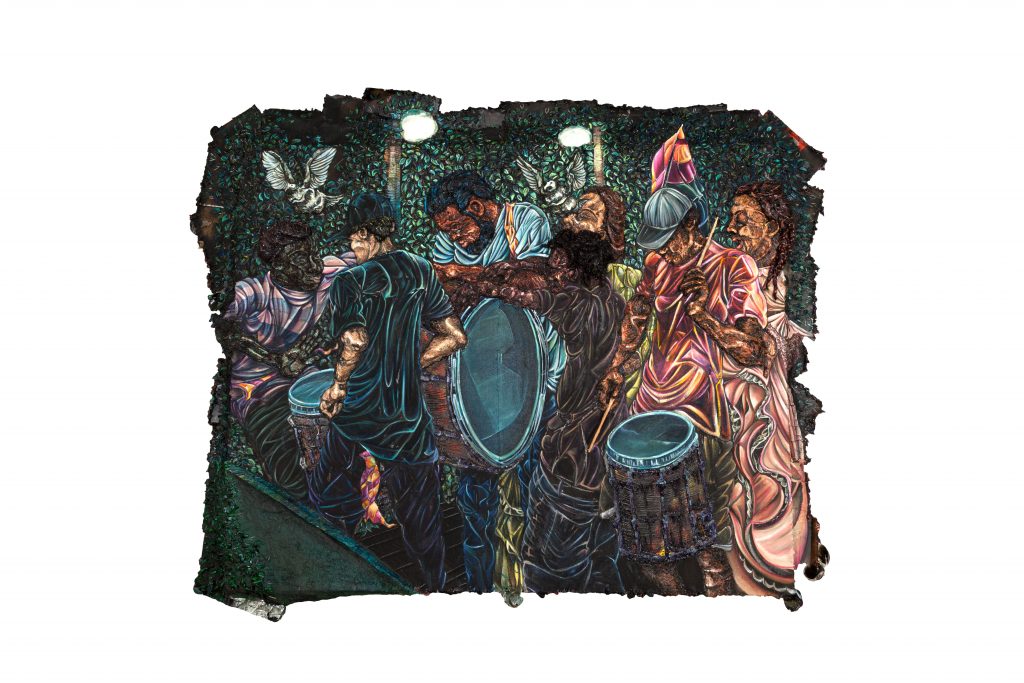
-
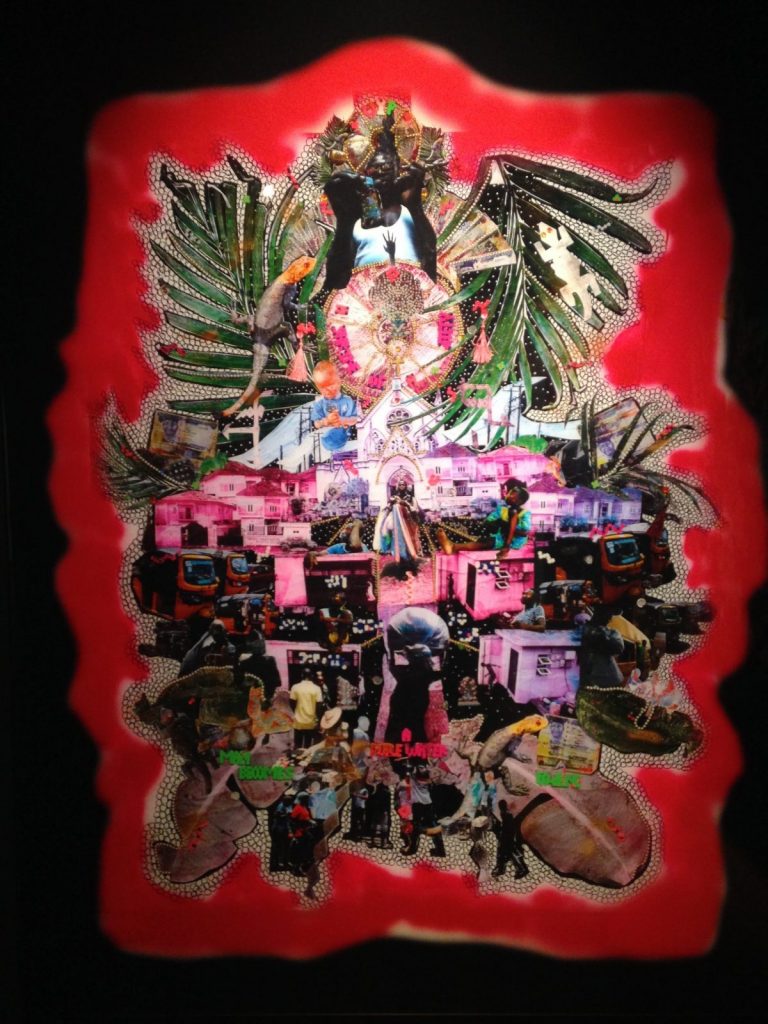
Raquel van Haver collage, 2018. Photograph by Shira Wolfe -
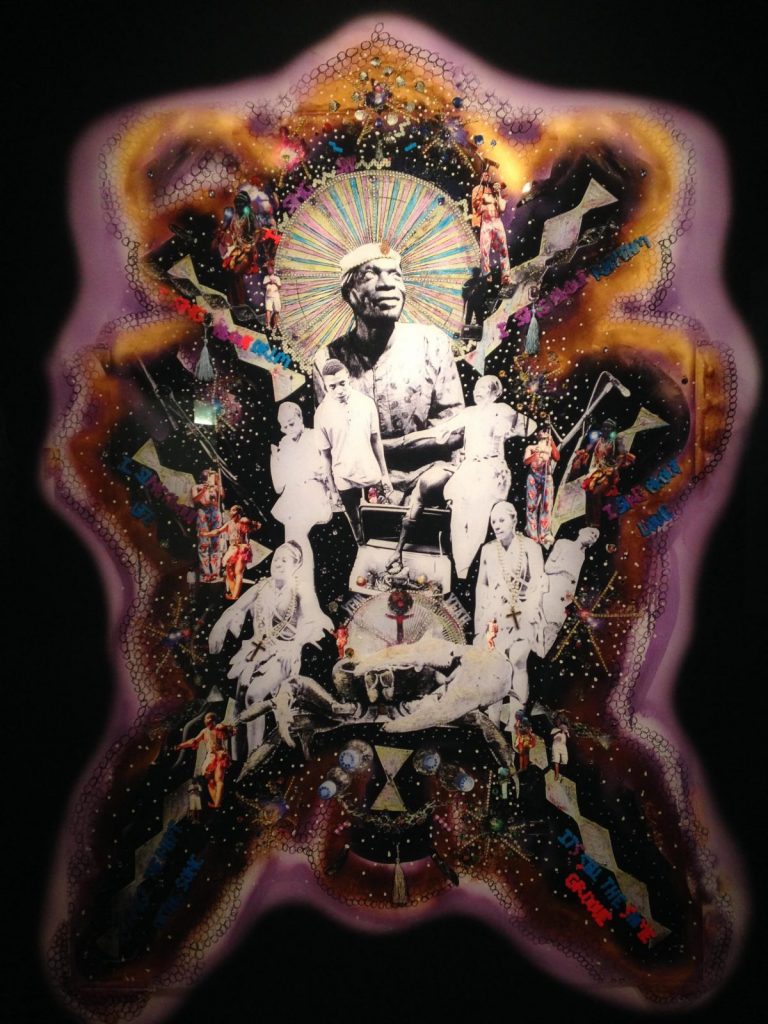
Raquel van Haver collage, 2018. Photo past Shira Wolfe -
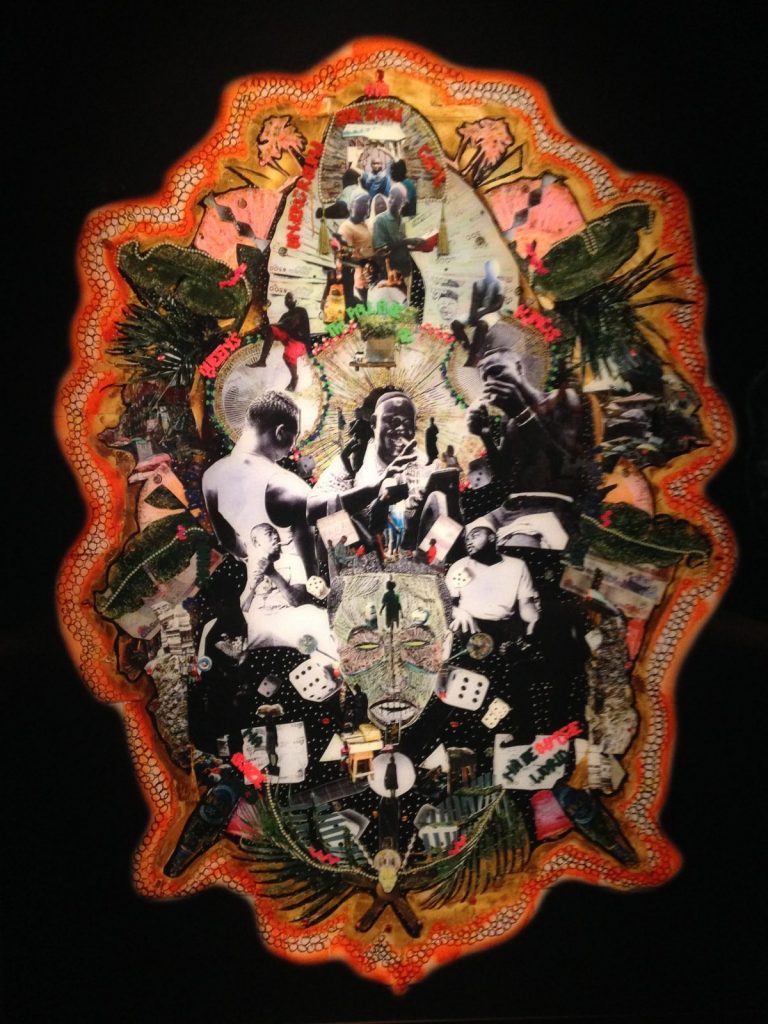
Raquel van Haver collage, 2018. Photo by Shira Wolfe
"A shard of drinking glass looks worthless. But when you put those shards together you can create an entirely new motion-picture show."
Vanessa High german

4. Vanessa High german – From Found Objects Towards Assemblage
Pittsburgh-based artist Vanessa High german grew upwards in LA in the '80s and '90s, where her female parent, who was a quilter, taught her at an early age to create her own worlds through artistic expression. During a particularly hard period in her adult life, German started collecting objects she found on the streets of Pittsburgh while walking her dog. She would accept the objects, ranging from glass to cans, buttons, cloth, bottles, and scraps of paper, to her basement and start assembling them into works of art. Speaking to Harold C. Ford of East Village Mag, High german notes: "A shard of drinking glass looks worthless. But when you put those shards together you tin create an entirely new motion picture."
A perfect example of how contemporary collage artists are reinventing the medium, German's mixed-media assemblage practice fluctuates between the layering of different materials on big boards and a real iii-dimensional, sculptural exploration of aggregation. These are the works that she is perhaps most known for – her powerful female bodies bulging with found objects and symbolic elements. They are power figures akin to the Primal African tradition of nkisi, composed of empowered objects (shells, bottles, keys, fabric pouches, string, beads, rhinestones, etc.) and are meant to heal, protect, and ward off evil.
Miracles and Glory Abound
An exhibition at the Flint Institute of Arts (which ran through 20 April 2019) presented as the centrepiece a mixed-media installation entitledMiracles and Glory Abound(2018). This impressive sculptural assemblage is a life-sized representation ofWashington Crossing the Delaware(1851), the iconic painting by Emanuel Leutze. Leutze's art is one representation of a foundational story about the nascence of America, depicting George Washington leading Continental soldiers beyond the Delaware River in 1776. High german'southward piece direct challenges Leutze's narrative and asks her viewers to consider who are the actors that get to decide on and shape history.Miracles and Glory Growis a gunkhole filled with man figures, all of whom are African American. Every bit noted by Holly Bass, a author, and functioning artist, "She (German) inserts and asserts her Blackness, her womanness, her multivalent queerness, into this ongoing American narrative and asks us to consider the birth of this nation, a mythology of chopped blood-red trees and founding fathers lying through wooden teeth." German'southward elaborately embellished assemblage-works call for communal transformation, healing through art, and a reassessment of grand narratives.
For more information nigh Vanessa Germans, see:
Vanessa High german Instagram
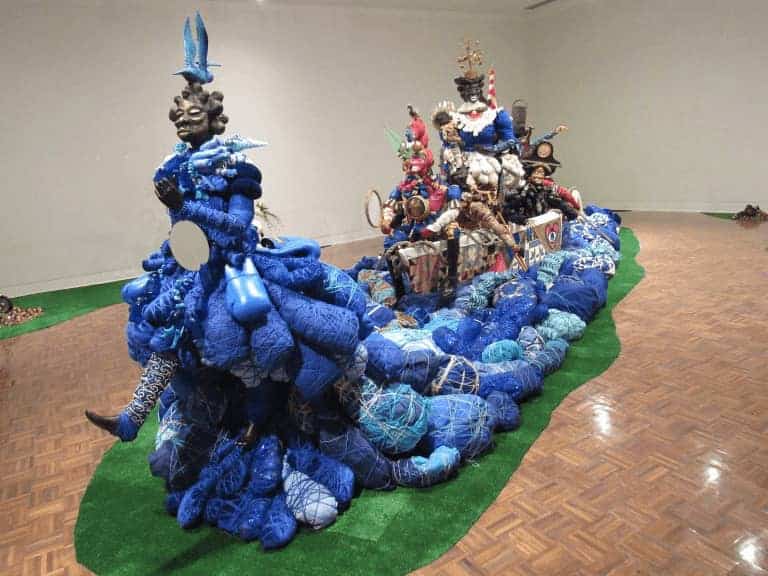
-

Vanessa German, Black on White Swan, 2016. Courtesy Pavel Zoubok Fine Fine art -
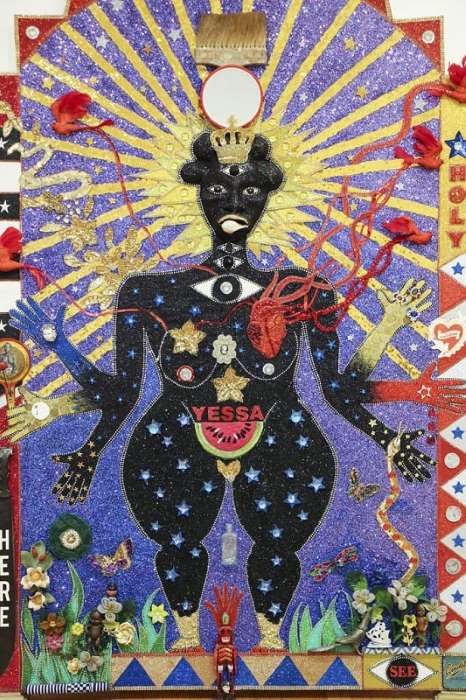
Vanessa German, Glory, 2017. Courtesy Pavel Zoubok Fine Fine art -
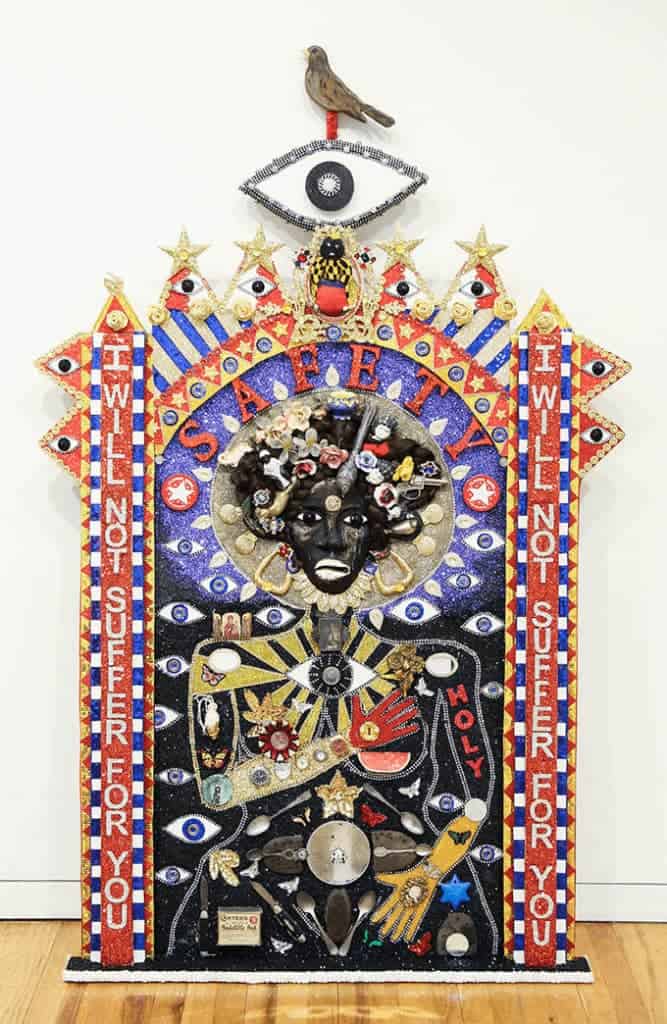
Vanessa German language, I Volition Not Suffer For Yous, 2017. Courtesy Pavel Zoubok Art -
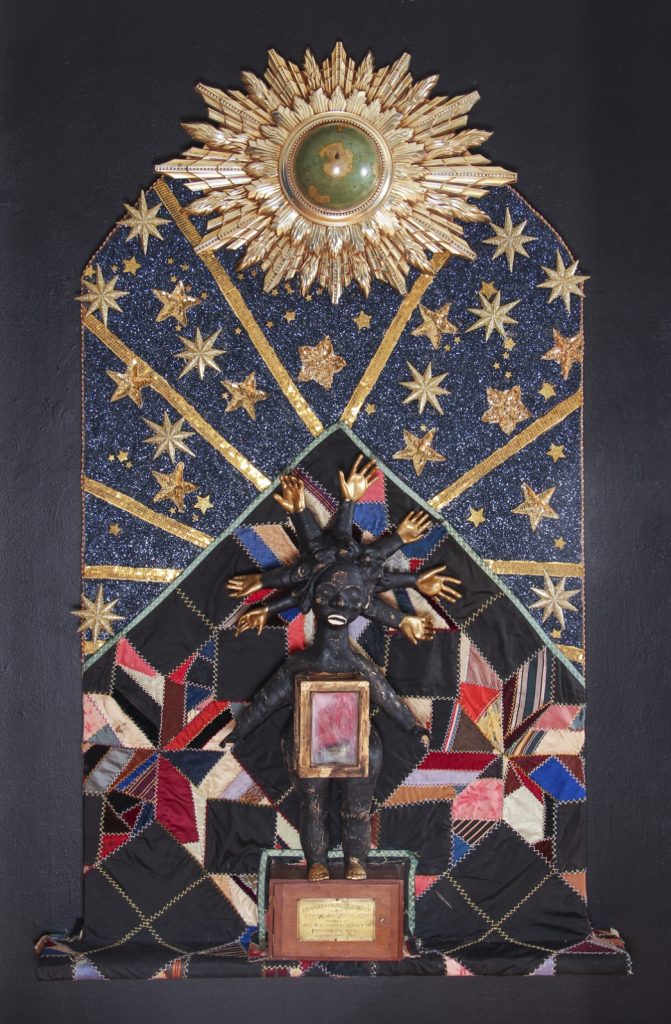
Vanessa German, You lot Are Not Solitary, 2018. Courtesy Pavel Zoubok Art
"To make things brand sense, I take to make things upwards."
Wangechi Mutu
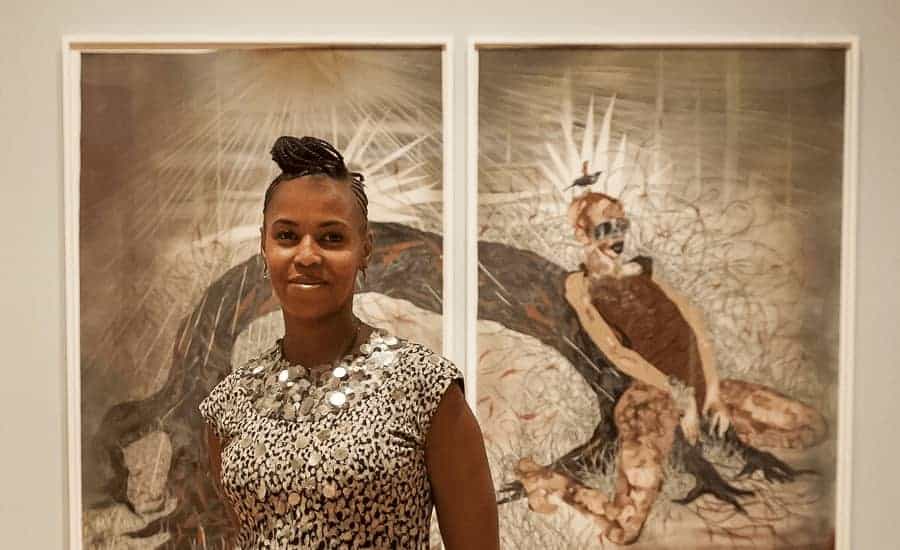
5. Wangechi Mutu – Female Motives
The final of this series of cutting-edge collage artists, Wangechi Mutu is a Kenyan artist based in New York who is known for her piece of work in collage, video, sculpture, and operation. Her work explores issues of gender, race, and personal identity while crossing through the history of art. Recurring motives in Mutu's works are masked women and ophidian-like tendrils, creating a sense that the artist is engaging in her own form of myth-making.
In her 2014 exhibition Nguva na Nyoka (which translates to "Sirens and Serpents" in Kiswahili) at Victoria Miro Gallery, Mutu presented a trunk of collage, video, and sculptural works. She drew on references ranging from the East African coastal mythology of nguvas ("water women"), gender and racial politics, Western pop culture, Eastern and ancient philosophy, and autobiography. All throughout Mutu's art, her powerful hybrid female figures reign.
Materials and Forms in Collage
Mutu is known for using Mylar in her collage-paintings, just has started shifting towards vinyl and linoleum every bit the basis for her works over the years. Mutu's forms are deftly cut out and assembled together, to which she adds her stylised, sensual painting. All kinds of unexpected materials enter into her collage works, including tea, constructed pilus, batik materials, Kenyan soil, feathers, and sand. Mutu hither imbues her pieces with their own, specific cultural signifiers. In her sculptural work, she too makes use of aroma and sound. One might encounter dripping bottles, fermenting wine, and rotting milk oozing from the mixed-media pieces.
Influences and Inspiration
The Afro-American collage artist is influenced by figures such every bit Dadaist Hannah Höch and Pop Artist Richard Hamilton. Like Höch, Mutu's collages explore gender roles, politics, and violence. Through her collage work, she started out exploring how land violence shows up on people's bodies. Later, Mutu started making collages from ethnographic photography, 19th-century medical illustrations, and magazine pornography. Her collages reveal the female body as a measuring device of any club'southward wellness.
At times, her women protagonists are influenced past real women, (Sarah Baartman, Josephine Bakery, Eartha Kitt, Grace Jones and Tina Turner to name merely a few), at other times they are amalgamations of her imagination. They are frequently muscular, erotic, powerful, fifty-fifty dangerous.
Mutu, who was built-in and raised in Nairobi, and so lived in Wales and finally settled in the The states, has always explored her country of in-betweenness. In her words, information technology was her American experience (along with all the exhaustion surrounding having to avoid people'south ignorant stereotypes) that allowed her to discover her way to incorporate African imagery in her work. As a result, Mutu's images present a standoff of worlds. They are visually seductive and thematically challenging, at times bordering on the grotesque. "To make things make sense, I have to brand things upwardly," Mutu explains.
Observe out more about Wangechi Mutu here:
Gladstone Gallery
Victoria Miro Gallery
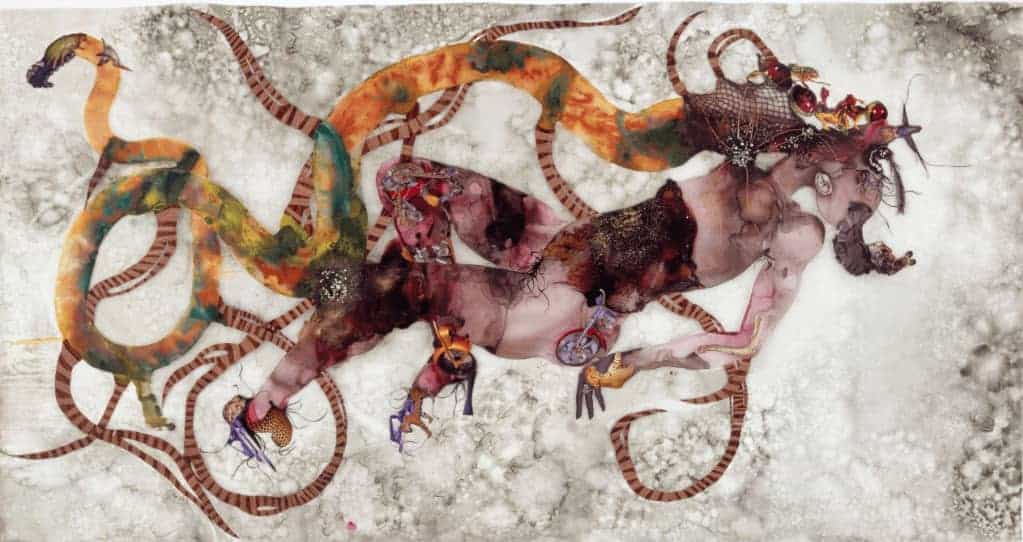
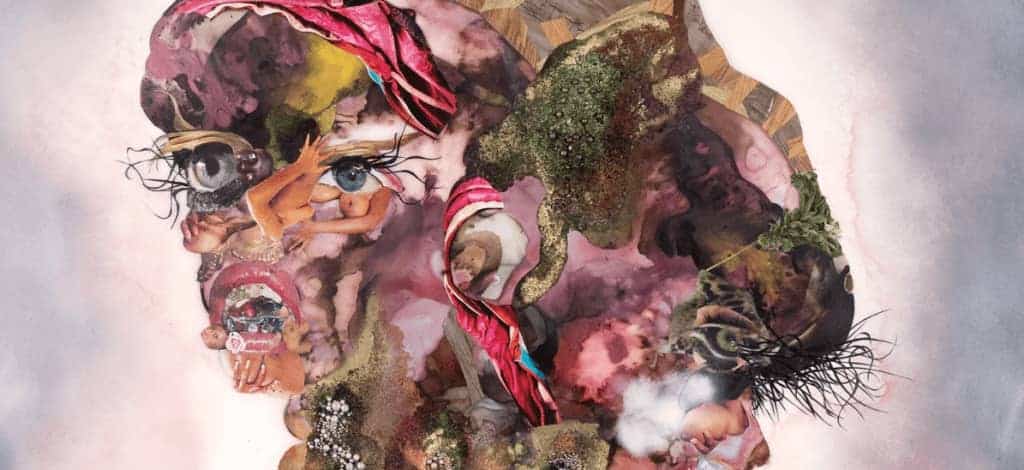
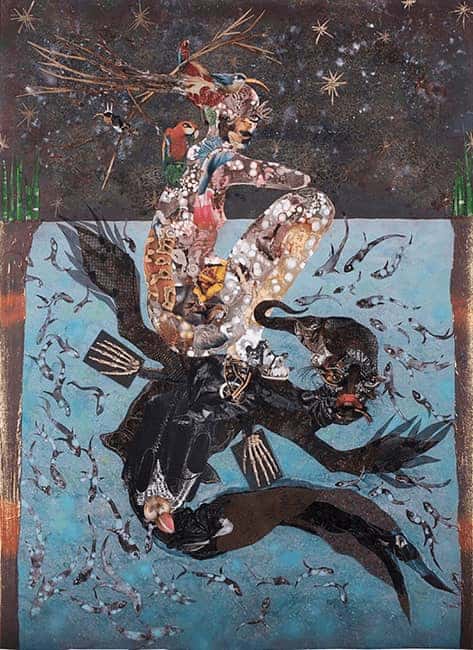
Collage art FAQ
What is collage art?
Collage art is a technique within art production that uses different types and forms of assemblage to grade a composition within the artwork thereby creating a new whole from the constituent parts. Collage artists usually include elements like newspapers, paint, wearable and other kinds of objects.
Who are the most famous collage artists?
The most renowned collage artists are Georges Braque, Pablo Picasso, Kurt Schwitters, Hannah Höch, Joseph Cornell, Henri Matisse, Robert Rauschenberg, Wangechi Mutu
Where did collage fine art originate?
The technique and term originated hundreds of years ago just made its breakthrough in the early 20th century as an art technique in itself when artists like Georges Braque and Pablo Picasso used it as a key part of their early on Cubist practice.
Relevant sources to acquire more:
A Walk Through Spirits of the Soil with Raquel van Haver – Artland
If you liked our pick of collage artists, see also our overview of contemporary artists reinventing silhouette fine art: Silhouettes: Fine art Betwixt Light and Shadow – Artland
Source: https://magazine.artland.com/5-contemporary-collage-artists/